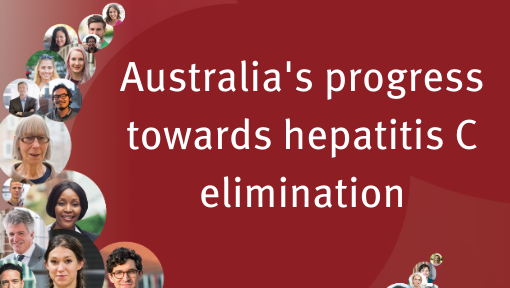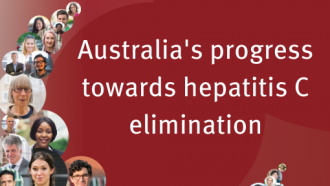Media release
From: The Kirby Institute for Infection and Immunity in SocietyFewer Australians are seeking testing and treatment for hepatitis C, according to a new report from Burnet and Kirby Institutes monitoring Australia’s progress in eliminating the disease.
When direct acting antivirals (DAAs) were added to the Pharmaceutical Benefits Scheme in 2016, the treatment became affordable and accessible, and uptake was high. The decline in testing and treatment during 2019 is a signal for action.
Professor Margaret Hellard, Deputy Director at Burnet Institute, who was one of the authors of the report said, “The report clearly shows the improved health outcomes DAAs deliver – people are achieving cure after accessing treatment and they are living free from hepatitis C. Very importantly, fewer people are progressing to need liver transplants because of hepatitis C.
“Now is a pivotal time in the effort to eliminate hepatitis C in Australia. After great success in the first few years that DAAs were available, we are now seeing a decline in hepatitis C testing and treatment uptake. We need to review, renew and refocus our efforts, engaging with key affected populations to ensure hepatitis C testing and treatment is easily accessible to the people who need it, when they need it, where they need it,” said Professor Hellard.
The Kirby Institute’s Professor Gregory Dore, who is a co-author on the report, agreed that it is critical to sustain and enhance hepatitis C elimination efforts, “Australia has done exceptionally well at delivering DAA therapy, and connecting the most at-risk populations with testing and treatment. This report brings together data from across the country and gives us a good picture of how we are tracking. The key moving forward will be to use novel testing technologies and innovative screening initiatives to increase diagnosis and linkage to highly curative treatments, whilst also maintaining prevention initiatives such as needle syringe programs.”
This was the first year the report included information from the prison system, which showed that an estimated 29 per cent of people treated for hepatitis C in 2019 were treated within the prison system.
“Within the prison system, we have an opportunity to use new rapid testing technologies to enhance linkage to care. With the high prevalence of hepatitis C in prisons, but often relatively short incarceration periods in remand settings, it is vital that we quickly test and connect people with curative treatments and support,” said Professor Dore.
More than 20 research, clinical, community and government partners across the country provided their data to Burnet and Kirby researchers to produce the report on Australia’s progress towards hepatitis C elimination. Australia’s National Hepatitis C Strategy 2018-2022 committed to eliminate hepatitis C in alignment with global targets set by the World Health Organization. Setting this goal was made possible with strong political leadership opening up universal access to direct-acting antiviral (DAA) therapy, backed up by an active community of partners to implement the Strategy.
The Burnet Kirby Report key findings:
- A decline in newly acquired hepatitis C infections appeared, using data from primary health care clinics that see people who inject drugs and gay and bisexual men.
- Treatment uptake peaked in the months following the listing of DAAs on the Pharmaceutical Benefits Scheme (March 2016) but has since slowed.
- A decline in liver transplants with hepatitis C as the primary diagnosis.
- Testing for hepatitis C has declined, particularly testing for hepatitis C RNA to detect new hepatitis C infections.
- An estimated 29 per cent of people treated in 2019 were treated in prison.
- Stigma and discrimination towards people who inject drugs and people living with hepatitis C remains prevalent, and this raises concerns about how this may be affecting individuals’ access to healthcare.
- A need to focus on primary prevention still exists – reports of receptive sharing needles and syringes has remained the same. Prevention efforts need to include improved access to sterile needles and syringes to reduce sharing among people who inject drugs, and expanding health promotion activities.
- Improved access to treatment is needed in rural and remote areas – mapping of treatment uptake in Australia shows inequity in opportunity and uptake needs to be addressed.
- Modelling in the report highlight that increasing testing, diagnosis and linkage to care is essential for Australia to achieve elimination of hepatitis C.
To find out more about the findings, you can access the full report. You can also attend the report’s launch via
webinar on Wednesday 25 November at 12:00pm (AEDT)



